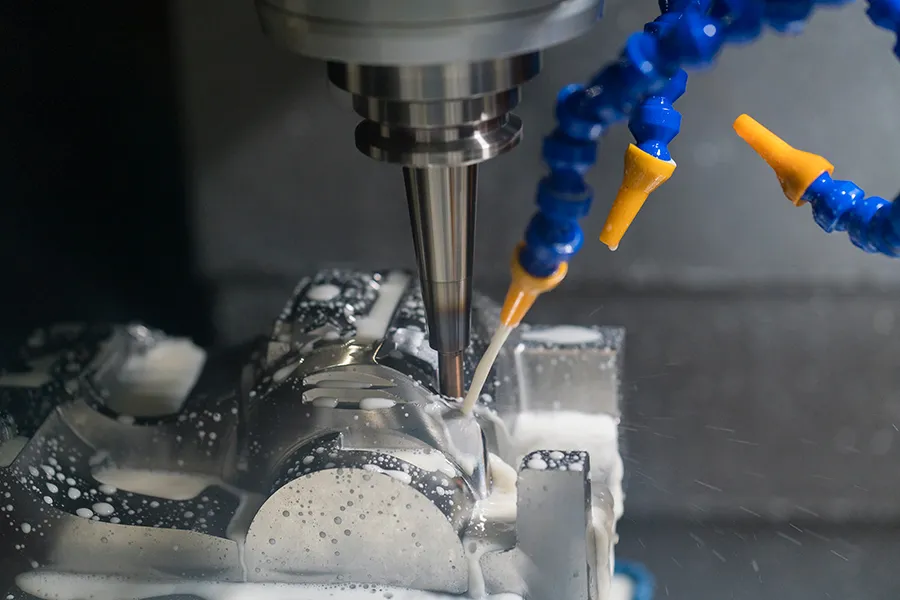Due to the frequent replacement of machined parts and restricted factory conditions, we have been programming, tool setting, debugging and completing the machining of parts by ourselves for ten years, summarizing the operating skills as follows.
Operating Skills for CNC Machining Part I. Programming skills
High requirements for the accuracy of the processed products, in programming matters need to be considered are.
(A) the processing order of the parts: first drilling and then flat end (this is to avoid shrinkage when drilling); first rough turning, then fine turning (this is to ensure the accuracy of the parts); first processing large tolerances and finally processing small tolerances (this is to ensure that the surface of the small tolerance size is not scratched and to prevent the deformation of the parts).
(B) according to the material hardness to choose a reasonable speed, feed and depth of cut.
1, carbon steel materials choose high speed, high feed, large depth of cut. For example: 1Gr11, choose S1600, F0.2, depth of cut 2mm;
2、Corded carbide choose low speed, low feed, small depth of cut. Such as: GH4033, choose S800, F0.08, depth of cut 0.5mm;
3、Titanium alloy choose low speed, high feed, small depth of cut. For example: Ti6, choose S400, F0.2, depth of cut 0.3mm. take my processing a part for example: the material is K414, this material is a special hard material, after many trials, finally choose S360, F0.1, depth of cut 0.2, before processing qualified parts
Operating Skills for CNC Machining Part II, the tool setting skills
Tool setting is divided into tool setting by instrument and direct tool setting. Most of the lathes do not have tool setting instrument, for direct tool setting, the following tool setting skills for direct tool setting.
First select the center of the right end face of the part for the tooling point, and set to zero point, the machine back to the origin, each need to use the tool to the center of the right end face of the part for the zero point on the tool; tool contact to the right end face of the input Z0 click on the measurement, tool complement value inside the tool will automatically record the measured value, which means that the Z axis on the tooling is good, X on the tooling for the test cut on the tooling, with the tool to turn the outer circle of the part less, measuring the value of the outer circle to be turned (such as x for 20mm) input x20, click measure, the tool complement value will automatically record the measured value, then the x-axis is also good; this tool setting method, even if the machine tool is powered off, after the call restart still will not change the tooling value, can be applied to large quantities of the same part for a long time, during which the lathe is turned off without the need to re-tool.
Operating Skills for CNC Machining Part III, debugging skills
In order to prevent errors in the program and tooling errors, which may cause collision accidents, we should first carry out empty stroke simulation processing, in the machine tool coordinate system, the face of the tool to the right of the overall translation of the total length of the part 2 – 3 times; then start simulation processing, simulation processing is completed After confirming the program and tool setting is correct, then start to process the part, after the first part is processed, first self-inspection, to confirm qualified, and then find the full-time inspection check, after the full-time inspection to confirm qualified this means the end of commissioning.
Operating Skills for CNC Machining Part IV, the completion of parts processing
Parts in the first trial cut after completion, we must carry out batch production, but the first qualified does not equal the whole batch of parts will be qualified, because in the processing process, due to the different processing materials will make the tool wear, processing materials soft, public number: UG programming base camp tool wear is small, processing materials hard, tool wear fast, so in the processing process, to diligent amount of diligent inspection, timely increase and reduce the value of the tool complement to ensure Parts qualified, to a part for example, processing material K414, processing the total length of 180mm, because the material is particularly hard, machining tool wear is very fast, from the starting point to the end, due to tool wear will produce 10 – 20mm slightly, so we must be in the program artificially added 10 – 20mm slightly, so that we have to add 10 –Therefore, we must artificially add 10 – 20mm slightly in the program, so as to ensure that the parts are qualified.
In short, the basic principles of machining: first rough machining, the workpiece to remove the excess material, and then finishing; machining should avoid the occurrence of vibration; avoid the thermal degeneration of the workpiece processing, caused by the vibration occurred for many reasons, may be too much load; may be the resonance of the machine tool and workpiece, or may be the machine tool is not rigid enough, or may be caused by the tool dull, we can reduce by the following methods Vibration; reduce the lateral feed and machining depth, check whether the workpiece is securely clamped, increase the speed of the tool to lower the latter can reduce resonance, in addition, check whether it is necessary to replace the new tool.

